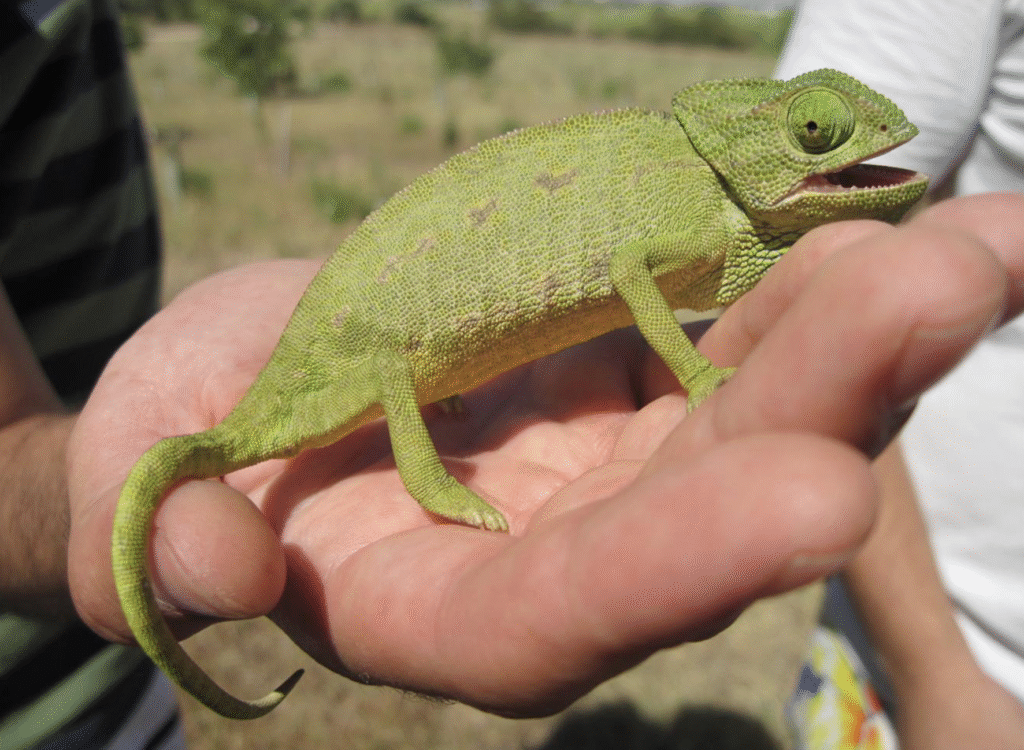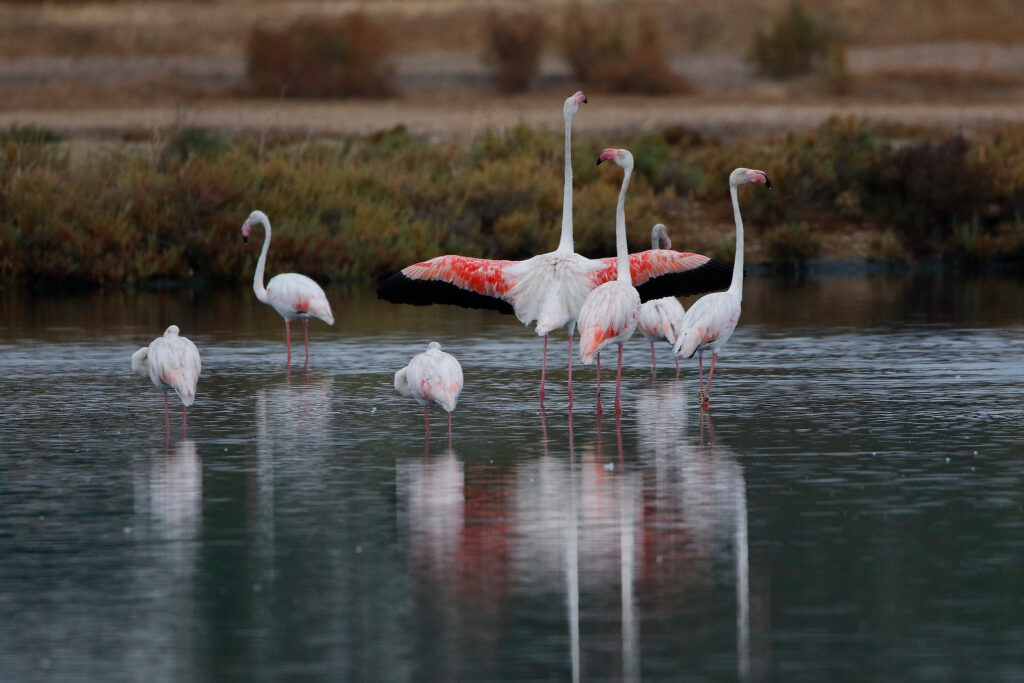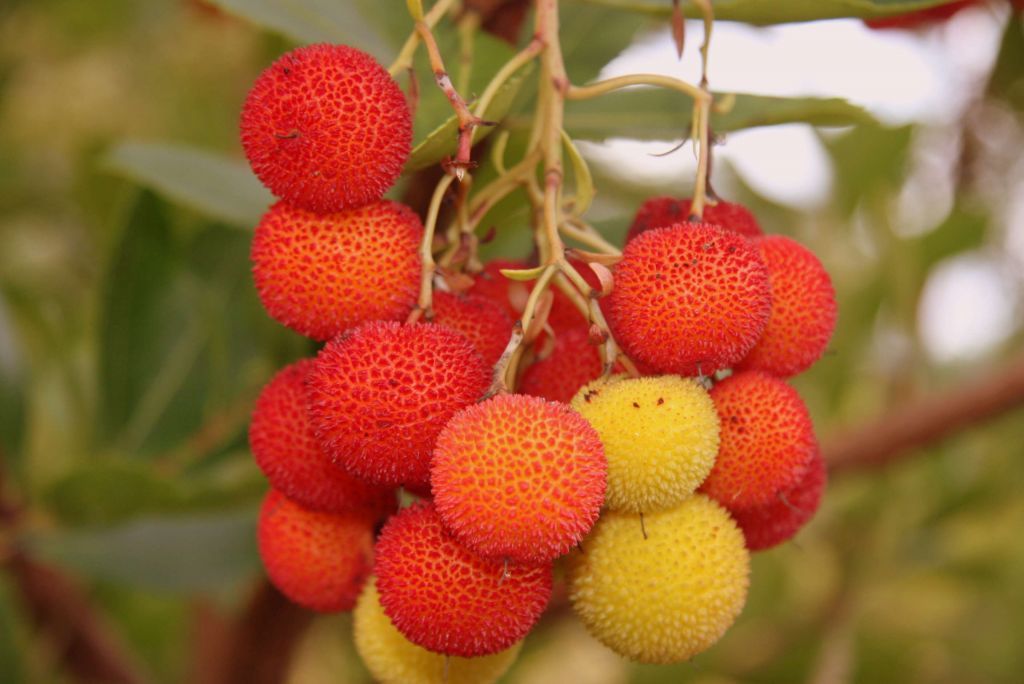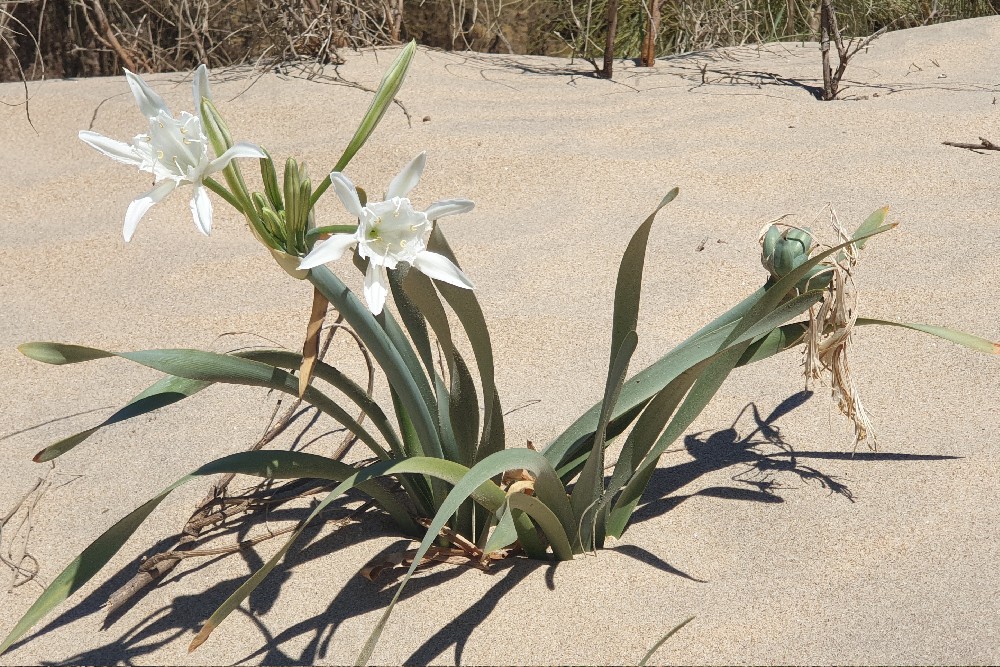When you think of the Algarve, what comes to mind?
Golden beaches, fresh seafood… But beyond its postcard-perfect coastline, the Algarve hides something just as precious: a thriving world of native wildlife and plants that bring life to this southern edge of Europe.
Exploring the Algarve through its autochthonous species it’s a reminder that even in a popular destination, true wilderness still exists, quietly waiting for you.

Chameleons, Lynxes, and Flamingos: The Native Wildlife
The common chameleon (Chamaeleo chamaeleon) might just be the Algarve’s most iconic reptile — and the only one of its kind in Portugal. With its slow, swaying movements and independently rotating eyes, it lives hidden in the low shrubs near the coast, especially in the Ria Formosa Natural Park. Though small and discreet, the chameleon is a symbol of the Algarve’s unique biodiversity.
Threatened by coastal development, it’s now considered a protected species — and a true treasure for those lucky enough to spot one.
Further inland, the Iberian lynx (Lynx pardinus) has made a cautious return. Once critically endangered, it’s now reappearing in the remote hills around Alcoutim and Castro Marim, thanks to international conservation efforts.
These solitary, majestic cats are incredibly shy, but knowing they roam these lands again will turn a quiet forest walk into something epic.

The Algarve’s wild side also extends to the sea.
Just offshore, bottlenose dolphins and common dolphins are often seen leaping beside boats or swimming near the coast. Regular dolphin-watching tours depart from Lagos, Portimão, and Albufeira, offering a respectful way to observe these intelligent, playful creatures in their natural habitat.
And then there’s the sky, where flamingos turn the salt flats… blush pink. Especially between autumn and early spring, large flocks feed in the shallow waters of Castro Marim and the Ria Formosa, creating surreal scenes of elegance and grace.
In 2021, these wetlands made history: over 500 flamingo chicks were born in Castro Marim, marking one of the first successful nesting events for the species in Portugal.

Plants With Stories: The Native Flora
It’s not just the animals that define the Algarve’s wild beauty. Its native plants — tough, aromatic, often ancient — are woven into the landscape and even the cuisine.
In the inland hills, cork oak forests (Quercus suber) form resilient green canopies that support entire ecosystems. Beneath them grow lavender, rockrose, thyme, and the strawberry tree (Arbutus unedo), whose red berries are used to make the fiery local medronho spirit.
These plants aren’t just pretty: they protect the soil, feed pollinators, and fill the air with the wild scent of the Mediterranean.

Among the most beloved trees of the Algarve is the carob tree. Native to this region, it produces dark brown pods that were once a vital food source and are now used in cakes, flours, and liqueurs.
Especially around the barrocal (the transition zone between coast and hills), you’ll find centuries-old carob trees.
What about the dunes? Full of life too. Hardy plants like the sea daffodil (Pancratium maritimum), the beach thistle (Eryngium maritimum), and the marram grass (Ammophila arenaria) thrive in wind and sand, anchoring the shifting landscape while feeding coastal insects and birds.
Hidden in valleys and rocky hillsides is a small but powerful presence: the dwarf fan palm (Chamaerops humilis), the only palm species native to continental Europe. Traditionally used to make brooms and baskets, this rugged, low-growing palm is part of the Algarve’s ecological and cultural heritage.

Where to See Algarve’s Wild Side?
If this inspires you to see the Algarve differently, there are places you can go, away from the crowds, to experience its native species in their natural habitats:
Ria Formosa Natural Park – A vast wetland reserve stretching along the eastern coast, perfect for spotting flamingos, rare birds, and chameleons. Walking trails like the Ludo Trail near Faro are ideal for quiet wildlife observation.
Castro Marim Marshlands – A lesser-known gem where salt harvesting and flamingos coexist. You can walk through the salinas, visit birdwatching hides, or enjoy panoramic views from the old Castro Marim Castle.
Costa Vicentina Natural Park – Covering the Algarve’s rugged west coast, this park offers wind-carved cliffs, endemic plants, and great birdwatching, especially during autumn raptor migrations.
Monchique and Caldeirão Hills – For lush forests, mountain trails, and wild herbs. Follow stretches of the Via Algarviana, a long-distance trail connecting east to west, and you may come across wild boar tracks, butterflies, and blooming wild orchids.
A Different Kind of Algarve…
A living landscape. So next time you visit, go off the beaten path. Stop at a nature reserve, or maybe take the slower route, and discover the Algarve that most people miss.
